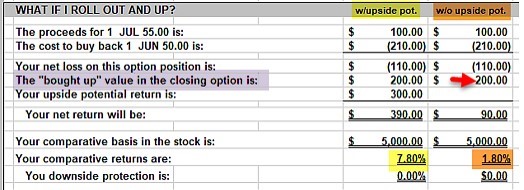1. Covered call trade + protective put.
2. Collar trade has 3 legs
- -Long STOCK (buy)
- -Short call (sell)
- - Long Put (buy)
3. Should we add a 4th leg by selling PUT as well?
-To fund the protective put.
All traded on 10/9/2018
- Buy 100 NVDA at 264.24 (now a long stock position)
- Sell 1x 265 call at 14.45 (now a covered trade)
- Buy 1x 250 Put at 8.20 (now a collar trade)
- Sell 1x 245 put for 6.65 (covered call on the upside and bear put spread on the bottom side)
Adding a Short Put to fund the cost of the Long Put: Advantages
- By generating a premium of $6.65, $8.20 cost of the protective put is reduced to $1.55
- The initial calculations then became: -14.45 - 1.555 = $12.90 = 4.9% ( on a cost basis of $264.24)
- This is more than double the collar initial time value return
Adding a Short Put to fund the cost of the Long Put: Disadvantages
- By selling the deeper OTM put (245.00 strike) we are incurring additional risk to the downside.
- If the price moves below 245.00 strike, we start losing money on that leg of the trade as the strike now is in ITM and has an intrinsic value component.
- That risk can be quantified in a worst case scenario a follows:-
- 245-6.65 = 238.35 per share
- Of course we would take exit strategy steps before letting the trade get that far out of control, but the risk should be understood and qualified before entering the trade.
- Discussion
- When establishing our covered call positions , we must define3 our personal risk-tolerance and set up our trades accordingly..
- If we require additional protection to the downsize, a protective put is a reasonable approach.
- Like most insurance policies, we must pay for this protection and our initial results will then decline.
- If a short put added to mitigate the cost of Long put, we 2ill then be adding additional risk which is what we were trying to avoid by buying the protective put.





